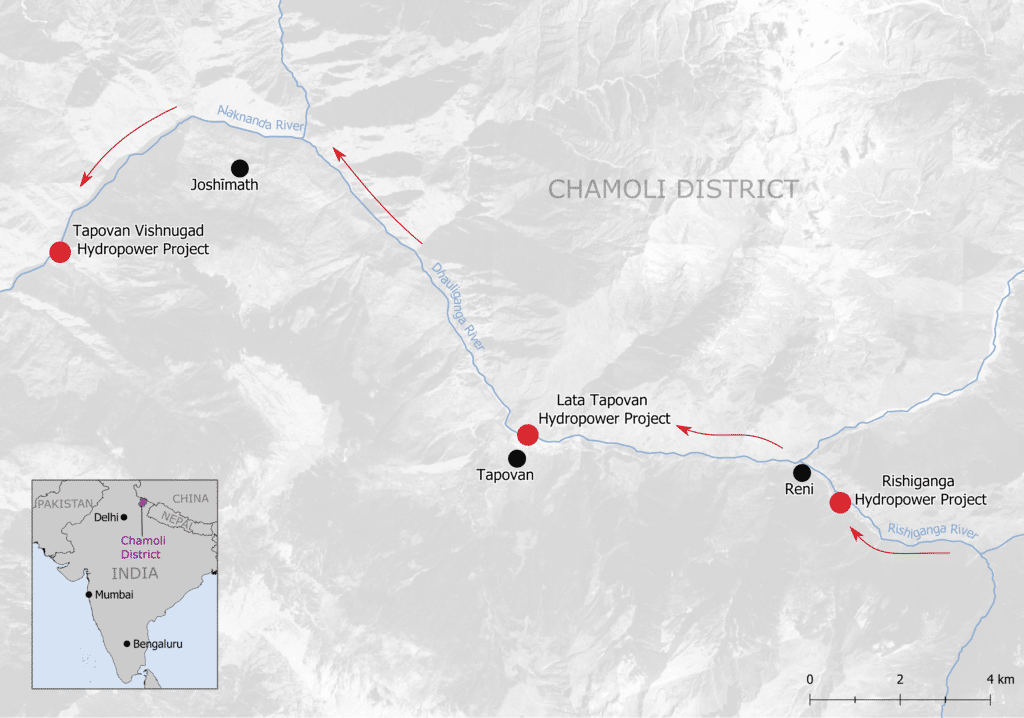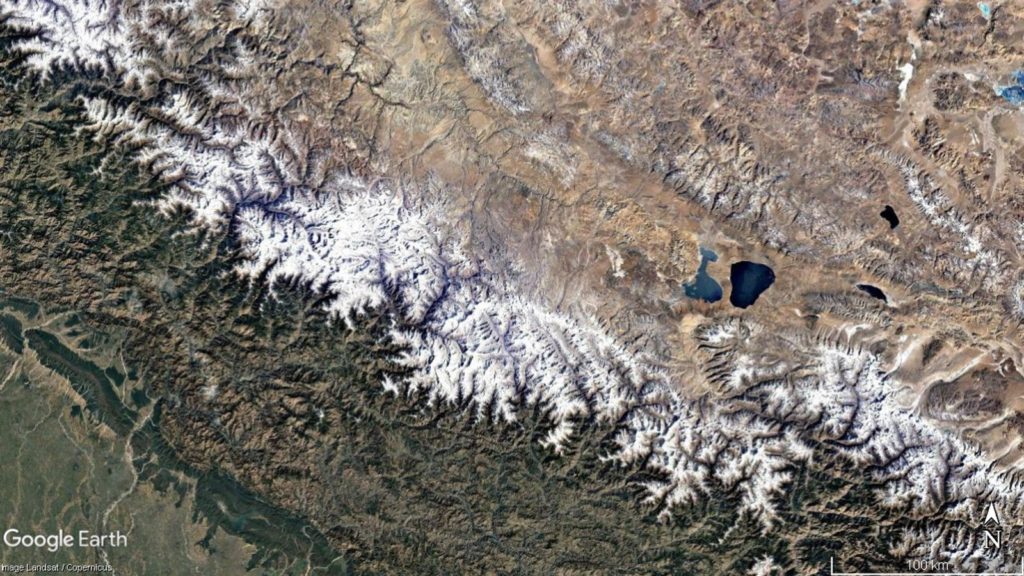The recent Nanda Devi glacier collapse in the Chamoli district of Uttarakhand, northern India, was a disaster. A large piece of ice broke off on the 7th of February 2021, leading to a massive flood in the Dhauli Ganga river, then in the Alaknanda – the major tributary of the Ganges.
—
The water crashed through the valley, destroying the Rishi Ganga power plant and severely damaging a hydropower project near the Tapovan village. An important bridge connecting thirteen villages near Tapovan was washed away, and another hydropower project downstream from Joshimath, the next agglomeration on the river, was also damaged. 35 of the Rishi Ganga plant’s workers are still missing, while 37 workers are stuck in a tunnel near the hydropower plant. As of today, 68 bodies have been recovered, and 140 are still missing.

Map of the course of the Uttarakhand flood in the Chamoli district of northern India, following the breakage of an upstream glacier. Climate change is expected to make events like these more frequent. Credit: Casar Corran.
The Hindu Kush Himalayan region is one of the world’s greatest river systems, providing fresh water for 1.65 billion people in India, Pakistan, China and neighboring nations. A 2019 report described the likely loss of 36% of the area’s ice caps by 2100, regardless of drastic climate action, up to 66% in a business-as-usual scenario.
This event was only one of many more to come, as inevitable melt will increase the frequency and possibly the intensity of water surges in the long run. Dams in the area may not be able to withstand all of them, and those that make it through can wreak havoc as we’ve seen here.

Above we have an image from 1984, where glacier cover is visible. Below is the same area 32 years later. The loss is astounding.

The authors of the 2019 study afore-mentioned say that the melting has accelerated during warm seasons, but that this will taper off as the glaciers lose mass. In turn, this will cause water shortages for the many who depend on the steady flow of water these normally provide.
Authorities need to understand that this wasn’t a freak accident, and that any future plans in the area should take reoccurrence into account.
This article was written by Owen Mulhern.
You might also like: Mapping the Mauritius Oil Spill










![The Statistics of Biodiversity Loss [2020 WWF Report]](https://u4d2z7k9.rocketcdn.me/wp-content/uploads/2020/12/lprwinkyTHB-544x306.jpg)





